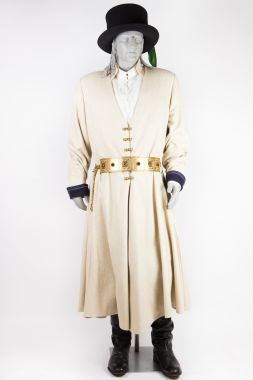Folk costumes
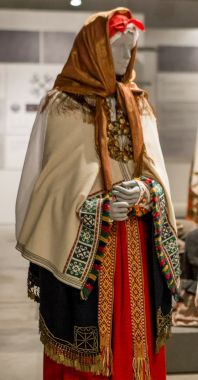
Women’s Clothing from Alsunga
Women’s clothing from Alsunga is characterized by a long, mid-calf length linen shirt in one of two styles. One style consists of separate, rectangular fabric pieces sewn together at the shoulders, while the other has a one piece body, where the front and back consist of one contiguous piece of fabric folded over at the shoulders. The shirt has a detachable collar and wide cuffs. The collar is embroidered with dark blue yarn or glass beads. The cuffs are embroidered with white or unbleached linen thread; alternatively with multi-coloured yarn. The shirt is fastened with a small to medium size sakta, set with polished glass stones.
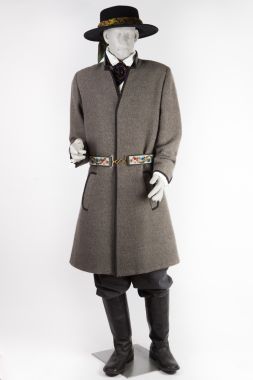
Man's Costume from Zemgale
The men’s clothing from Zemgale is characterized by a linen shirt made of separate, rectangular fabric segments stitched together at the shoulders or a tunic-type shirt where the front and back are made of one contiguous piece of fabric folded over at the shoulders. Shoulder straps are stitched over the seams and fold lines, and there is a one to two centimetre wide banded collar. The shirt is made of fine linen fabric without any embellishment.
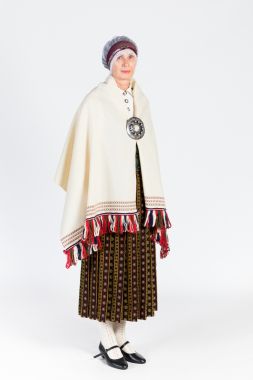
Married Women’s Clothing from Zemgale
Zemgales novada sievas tautastērps - Gitas Andersones mantojums.
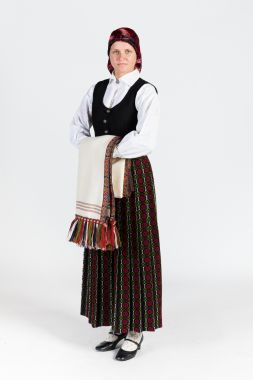
Women’s Clothing from Zemgale
Zemgale is located in Southern Latvia. It was once populated by the ancient Zemgalians who settled around the Lielupe River and its tributaries. In the nineteenth century, Zemgale consisted of the districts of Bauska and Jelgava, part of Eastern Tukums and the Rīga parishes on the left bank of the Daugava, which are now part of Vidzeme, even though economically and culturally they had closer ties with Zemgale. Because there are relatively few surviving articles of clothing from here, this area is not subdivided further. Even so, differences can be observed between the eastern and western areas. Traditional clothing here was shaped by the area’s affluence, well-developed agricultural, manufacturing, and trade sectors.
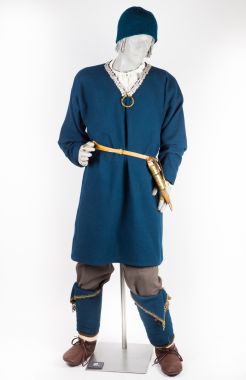
Livonian Men's Clothing
Jau mūsu ēras pirmajos gadu simtos dažādām baltu cilšu grupām bija savdabīgas apģērba, rotāšanās un apbedīšanas tradīcijas. Pēc atrastajām senlietām un audumu fragmentiem iespējams rekonstruēt pat no 7. līdz 13. gadsimtam valkāto apģērbu. Līdz pat 13. gadsimtam kurši mēdza aizgājējus sadedzināt, bet, līdz ar kristietības ienākšanu Latvijas teritorijā, virsroku ņem apbedīšanas tradīcija. Pārsvarā baltu ciltīs mirušos apbedīja, tādejādi ļaujot artefaktiem saglabāties un dot mums kaut nelielu priekšstatu par tā laika apģērbu.
